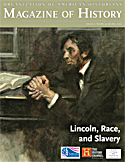 Received the latest issue of Magazine of History this morning, its theme: “Lincoln, Race, and Slavery.” I had a few minutes and looked through it during lunch. I posted recently about Lincoln and race, and so this issue was of interest to me.
Received the latest issue of Magazine of History this morning, its theme: “Lincoln, Race, and Slavery.” I had a few minutes and looked through it during lunch. I posted recently about Lincoln and race, and so this issue was of interest to me.
All of the articles are very strong and diverse, which is not a surprise coming from this fine magazine. Here they are:
Changing Perspectives on Lincoln, Race, and Slavery
Brian Dirck
Lincoln, Race, and Slavery: A Biographical Overview
Allen C. Guelzo
Lincoln and Colonization
Richard Blackett
“That All Mankind Should Be Free”: Lincoln and African Americans
Thomas C. Mackey
Dirck’s (and Guelzo) article I was able to read in its entirety and he does a nice job of covering the historiography of Lincoln and race. Guelzo’s was probably my favorite as it was very balanced and fair; all are really fair.
We’re obviously aware of Lerone Bennett and other 1960s and 70s writers and historians condemnation of Lincoln. But what surprises me is that anyone could try to insist that Lincoln did not have some racist beliefs. He was a product of his environment after all. But in that same regard, I do not understand how one cannot see that Lincoln was a progressive who truly hated slavery and believed that all mankind deserved the promise of the constitution and freedom.
Lincoln may not have entered the White House as a “Great Emancipator,” and how he ultimately became an emancipator is arguable, but I frankly find all arguments that he was not an emancipator to be dishonest. Was he the “great” emancipator, that’s debatable, as by the time he issued his proclamation thousands of blacks were already freeing themselves. But it is, in my opinion, unjust to suggest that Lincoln was not a great mind who understood the wrong of slavery and ultimately wanted to end it and in doing so give equality to blacks. He was more than a “racists with good intentions.”
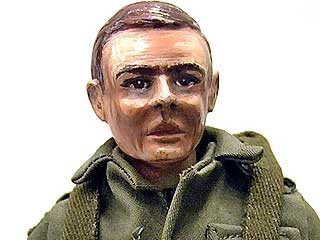 It’s getting to the point now where I have to talk about it as I truly believe
It’s getting to the point now where I have to talk about it as I truly believe 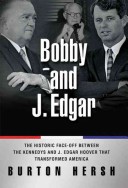 Bobby and J. Edgar: The Historic Face-Off Between the Kennedys and J. Edgar
Bobby and J. Edgar: The Historic Face-Off Between the Kennedys and J. Edgar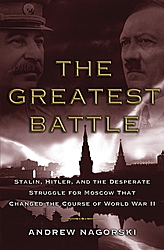 Students typically enter my U.S. History B class believing that the United States, with some help from England, won World War 2. When I start to work my way into the narrative, the events leading up to the war’s outbreak, students are often surprised by the vicious and massive slaughter that took place on the Eastern Front.
Students typically enter my U.S. History B class believing that the United States, with some help from England, won World War 2. When I start to work my way into the narrative, the events leading up to the war’s outbreak, students are often surprised by the vicious and massive slaughter that took place on the Eastern Front.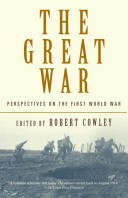 I wanted to be a little stronger with my World War I unit, so I havea few excellent books that I think will help me some. Robert Cowley is the editor of
I wanted to be a little stronger with my World War I unit, so I havea few excellent books that I think will help me some. Robert Cowley is the editor of 
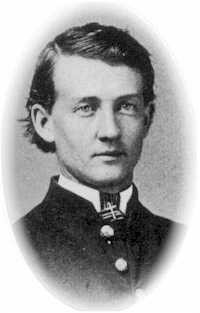 It’s Fall Break here in Colorado and I have greatly enjoyed my first day off in some time. Last night my son’s football team won the 8th grade city championship, 48-0. He is a starting defensive and offensive player on the team. After the win, his coach proclaimed them the best team he has ever coached. Hard for a father not to be extremely proud of his son. I was reflecting back on that today when I picked up to read, “A Soldier’s Story of the Siege of Vicksburg,” by Osborn H. I. Oldroyd (his initials spell OHIO) of the 20th Ohio. After the Battle of Champions Hill he wrote, “our army has never known defeat.” Grant might have reflected later that his Western men were the best he had ever commanded. If the Vicksburg Campaign were a football game, Grant’s Army of the Tennessee had won it quit easily, something like 48 to zero.
It’s Fall Break here in Colorado and I have greatly enjoyed my first day off in some time. Last night my son’s football team won the 8th grade city championship, 48-0. He is a starting defensive and offensive player on the team. After the win, his coach proclaimed them the best team he has ever coached. Hard for a father not to be extremely proud of his son. I was reflecting back on that today when I picked up to read, “A Soldier’s Story of the Siege of Vicksburg,” by Osborn H. I. Oldroyd (his initials spell OHIO) of the 20th Ohio. After the Battle of Champions Hill he wrote, “our army has never known defeat.” Grant might have reflected later that his Western men were the best he had ever commanded. If the Vicksburg Campaign were a football game, Grant’s Army of the Tennessee had won it quit easily, something like 48 to zero. Was Lincoln the “Great Emancipator?” –
Was Lincoln the “Great Emancipator?” –  Blacks involvement in their own “Emancipation.” – Too easy to not cover this well enough. I had one student who after noting that in some regions in the South where slaves out-numbered the whites, asked me why didn’t they rise up? For some reason, I stumbled around and offered a less than desired explanation. His intent was to point out that Blacks seemed incapable of emancipating themselves in most cases. This was a discussion that does not always happen. It’s one thing to go over Harriet Tubman and the Underground Railroad, but another to provide information showing how Blacks did indeed start to take the initiative and free themselves.
Blacks involvement in their own “Emancipation.” – Too easy to not cover this well enough. I had one student who after noting that in some regions in the South where slaves out-numbered the whites, asked me why didn’t they rise up? For some reason, I stumbled around and offered a less than desired explanation. His intent was to point out that Blacks seemed incapable of emancipating themselves in most cases. This was a discussion that does not always happen. It’s one thing to go over Harriet Tubman and the Underground Railroad, but another to provide information showing how Blacks did indeed start to take the initiative and free themselves.